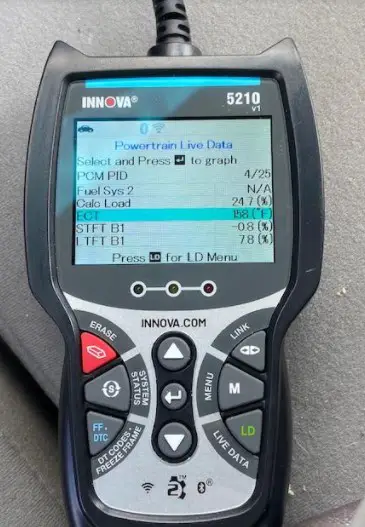The engine uses many sensors to monitor its operation and health. One of the most damaging situations an engine can be exposed to is overheating. To prevent this, the engine monitors the temperature of the coolant via an engine coolant temperature sensor or ECT for short.
It is absolutely imperative to make sure that all of your sensors are functioning properly and reporting correct data. A faulty engine coolant temperature sensor can cause all sorts of problems for your vehicle.
What Does an ECT Sensor Do?
The engine coolant temperature sensor measures the temperature of the coolant in your engine. As coolant is pumped through the engine block, heat is transferred into it. Measuring the temperature of the coolant helps the ECU monitor the overall temperature of the engine block. An overheated engine can warp pistons, cause leaks, and even melt components.
How Does an ECT Sensor Work?
The engine coolant temperature sensor is located near the thermostat. When the coolant heats up, the thermostat opens and pushes coolant through the system. The ECT then reads the temperature and sends the data to the ECU which will then adjust the engine parameters accordingly.
The ECT is basically a thermistor. ECTs are commonly supplied with a 5 volt reference voltage. In a cold engine, the resistance read by the ECT is high. As the engine heats up, the resistance falls because most vehicles use a negative temperature coefficient sensor. Since the resistance measured correlates with a temperature, the ECT is able to monitor the temperature of the coolant by converting the electrical resistance reading into degrees Fahrenheit.
As a side note–some older vehicles may have a positive temperature coefficient. This will cause an increase in resistance as the temperature rises.
Signs Your ECT Sensor Is Failing
So what are the symptoms of a failing ECT sensor?
- Poor Fuel Economy: When the engine is cold the ECU will provide a richer (more fuel) air/fuel mixture to the engine to warm it up. A failing ECT sensor could be reading colder or permanently cold even if the engine is hot. This will throw off the air/fuel ratio that the ECU calculates for the engine. This will cause poor fuel economy and even poor performance. Its usually one of the first signs the ECT is failing.
- Overheating Engine: If the ECT sensor fails and reads a permanently hot temperature for the coolant even if the engine is cold, it will confuse the ECU. The ECU will try to adjust for what it believes to be a lean air/fuel mixture causing overheating, misfire, or pinging. Because the ECT is reading incorrectly it could even trigger a check engine light with a proper functioning cooling system.
- Black Smoke from Exhaust: Another sign that could be related to a failed engine coolant temperature sensor is black smoke from the exhaust. A failing ECT can cause the ECU to enrichen the air/fuel mixture. This rich fuel mixture will give the engine more fuel than it can combust. The excess fuel will then burn up in the exhaust pipes producing black smoke.
- Check Engine Light: One of scariest check engine lights is a check engine light for overheating. However, if the ECT fails your engine might not know it is overheating or it might say it is overheating and actually be fine. It all depends on if the engine coolant temperature sensor is reading the correct temperature. If the ECU detects a problem with the circuitry with the sensor it could trigger a code. In any case a check engine light should not be ignored.
How to Troubleshoot ECT Sensors
So how do you troubleshoot issues with the ECT Sensor? The easiest way is with an engine scanner. I prefer the Innova 5210 scanner. Its easy to use. You can read the actual live data output from your ECT Sensor, fuel trims, and much more. It can be found here.

Another way to troubleshoot the sensor is with a digital multimeter. Since the ECT signal voltage should be around 2-3V, you can verify this with a DMM. If the ECT signal is 0V, then you have short circuit and the sensor isn’t getting power; however, if the signal voltage is 5V then there is an open circuit. Either case is not good and would cause the ECT to not function properly.
If your sensor has either of these readings, there are steps you can take. Check all of the sensor terminals for proper connections and then trace the wires and inspect for any cuts are tears.
If you really want to get involved in the trouble shooting, you can remove the ECT sensor and place the sensor in water and use a digital multimeter to read the resistance. If you know what ECT sensor you have, then you should be able to find a table that will correlate the resistance to the water temperature. Generally speaking, a cold engine at 20 degrees Celsius should have a resistance between 2000-3000 ohms and as it heats up the resistance should drop to 200-300 ohms.
Conclusion
ECT sensors are crucial for protecting your engine from overheating. Over time these sensors can suffer from wear, loosened connections due to vibration, and corrosion from being in the environment. If your vehicle experiences any of the symptoms above you should check out your ECT sensor. The easiest way is to plug in an engine scanner and see what temperature the ECT is reading at. Otherwise there are electrical troubleshooting steps that can be taken above.




